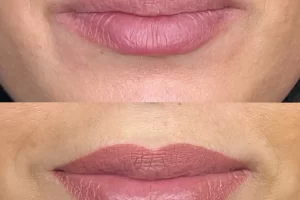Tattoos have been a popular form of body art for centuries. However, as people’s tastes and preferences change over time, they may find themselves wanting to remove a tattoo. Whether it’s because of a change in personal style, a workplace requirement, or simply regret, the desire to have a tattoo removed is not uncommon. In this article, we will explore the question of whether tattoos can be completely removed.
The Process of Tattoo Removal
Tattoo removal is a complex process that aims to fade or eliminate a tattoo from the skin. There are several methods available, each with its own level of effectiveness. The most common methods include:
- Laser Removal: This is the most popular and widely used method for tattoo removal. It involves using laser technology to break down the ink particles in the skin. The body’s immune system then naturally removes these particles over time. Laser removal is known to be effective, but it may require multiple sessions and can be quite costly.
- Excision: This method involves surgically removing the tattooed skin and stitching the surrounding skin together. While it can completely remove a tattoo, it is generally only used for small tattoos and may leave behind a scar.
- Dermabrasion: Dermabrasion involves “sanding” the skin using a rotating brush or abrasive device to remove the tattoo. This method is not as commonly used today due to its potential for scarring and pigmentation issues.

Limitations of Tattoo Removal
While tattoo removal methods have come a long way, it is important to note that complete tattoo removal is not always possible. The success of removal depends on various factors:
- Tattoo Size and Color: Larger tattoos or those with multiple colors may be more challenging to remove completely. Darker colors, especially black, tend to respond better to laser removal than lighter colors.
- Location on the Body: Tattoos located on areas with more fatty tissue, such as the arms or thighs, tend to be easier to remove than those on bony areas like the hands or feet.
- Age of the Tattoo: Older tattoos are generally easier to remove than newer ones, as the body’s immune system has had more time to break down the ink particles.
- Professionalism of the Tattoo Artist: Tattoos done by inexperienced or amateur artists may have inconsistent ink distribution, making removal more difficult.
Expectations and Realistic Results
While significant progress has been made in tattoo removal techniques, it is important to have realistic expectations. Complete removal of a tattoo is not guaranteed, and some degree of ink and shadow may remain even after multiple sessions. Additionally, certain individuals may have a higher risk of experiencing side effects such as hyperpigmentation, hypopigmentation, or scarring.
Can tattoos be removed 100%? The answer is that it depends. While modern tattoo removal methods can achieve significant fading or complete removal, there are limitations. Factors such as tattoo size, color, location, and age, as well as the professionalism of the tattoo artist, can impact the success of removal. It is essential to consult with a qualified professional to discuss expectations and determine the best course of action for tattoo removal.











